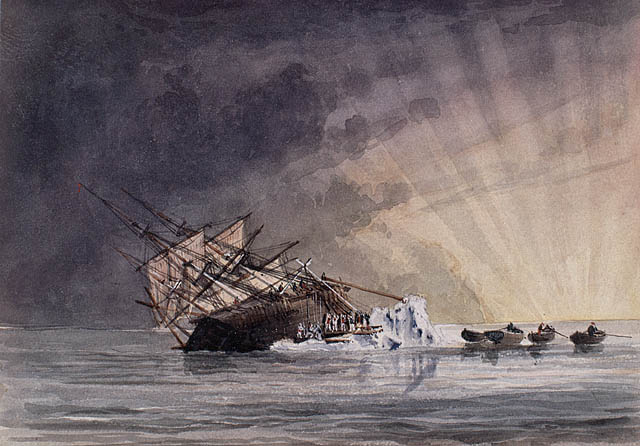Britain transfers Franklin’s shipwrecks to Canada, Inuit
The transfer was made official on Thursday.

Franklin’s two iconic Arctic shipwrecks now legally belong to Canada and Nunavut Inuit.
On Thursday, April 26, the British government officially handed over the ships to the Canadian government, more than 170 years after Sir John Franklin and his crew sailed from England in the British Royal Navy vessels in search of the Northwest Passage.
The HMS Erebus and HMS Terror were discovered resting on the ocean floor near King William Island, or Qikiqtaq, in western Nunavut, in 2014 and 2016.
The transfer, first announced last October 2017, was made official at a press conference in Gatineau on Thursday afternoon.
Catherine McKenna, Canada’s minister responsible for Parks Canada, called the transfer an “exceptional gift” that will ensure “the expanding story of the Franklin expedition continues to be shared with Canada and the world” in a news release.
The shipwrecks will be jointly owned by the Canadian government and Inuit via Parks Canada and the Inuit Heritage Trust, as mandated by the Nunavut Agreement to preserve the territory’s archaeological and ethnographic history.
The agreement will allow the U.K. to keep all 65 artifacts already discovered by Parks Canada’s diving teams.
But all yet-to-be discovered artifacts from the Erebus and the Terror will now be jointly owned by Canada and Inuit.
“I am very pleased with today’s gift by the United Kingdom,” said Fred Pederson, chair of the Franklin Interim Advisory Committee, in a news release.
“Canada and Inuit will be joint owners of the artifacts going forward which provides a great opportunity for Inuit to be involved with, and guide, how the rest of the story unfolds.”
The advisory committee is a group established in 2016 to manage the wrecks ahead of an Inuit impact and benefits agreement, to be negotiated between the Kitikmeot Inuit Association and Parks Canada.
Parks Canada is now working with the committee to develop an Inuit guardians program for the two vessels, positions that would be posted at both wreck sites during ice-free periods to monitor the sites and track any unauthorized vessel traffic.
Sir John Franklin, in command of the Terror, Erebus and 128 crew members, left England in 1845 in search of a passage through Canada’s Arctic islands to the Pacific Ocean.
Franklin and his entire crew were lost during the course of their mission some time after 1848, according to a note recovered on King William Island, although much of the timeline of the tragedy is still a mystery.
Since the discovery of the Erebus in 2014, different organizations and governments have jockeyed for stewardship of the wrecks and its artifacts.
In 2015, the Government of Nunavut refused to grant Parks Canada diving permits to the Erebus, and again in 2016, unless the federal government agreed to joint ownership of any recovered relics.
The same year, the federal government designated the area around the Erebus a national historic site, thereby superseding Nunavut’s claim to the wreck.